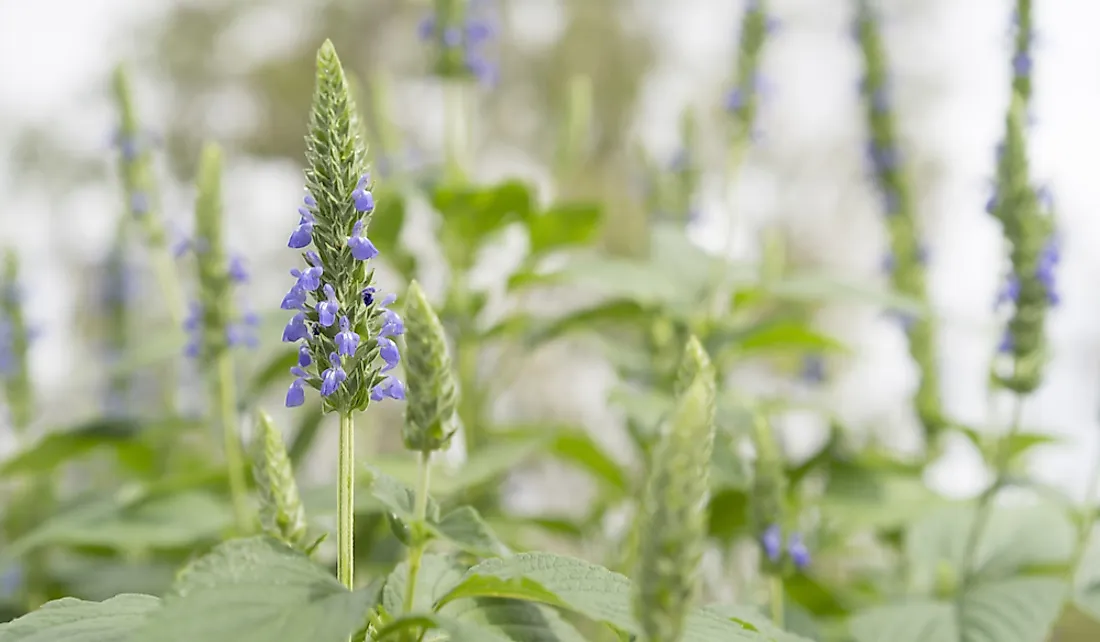Where Do Chia Seeds Come From?

Chia seeds are featured as the main ingredient in several healthy recipes such as protein bars, baked goods, and smoothies. The seeds are not only highly nutritious but also offer great texture and flavor to food. They have become a popular superfood in the healthy community with a long list of benefits. Chia seeds are unique in that they can absorb up to 12 times their weight in liquid and develop a creamy coating, which creates a distinctive gel texture. But what are these little seeds and where in the world are they found?
Source of Chia Seeds
There are two plants that are known as chia: Salvia hispanica and Salvia columbarriae.
Salvia hispanica is a flowering plant in the mint family that grows up to approximately 5.7 feet high and has leaves that are 1.6-3.1 inches long and 1.3-2 inches wide. Chia plants produce numerous white or purple flowers that are clustered in spikes at the end of the stem. The plants are native to Central America, particularly Mexico and Guatemala. They have also been planted in some areas in South and North America including the southwestern United States and western Mexico. Chia means "oily" in the Aztec language of Nahuatl.
Salvia columbarriae, which is also referred to as "golden chia," is an annual plant found in North America. The plant was an important food source for Native Americans and can be found in several US and Mexican states including New Mexico, California, Utah, Nevada, Arizona, Baja California, and Sonora. The plant grows up to approximately 2 ft high and has clusters of blue or purple flowers. The preferred habitat for the plant is at elevations below 8,200 ft in undisturbed and dry chaparral or coastal sage scrub
Description and Nutrient Content of Chia Seeds
Chia seeds are oval-shaped with a diameter of approximately 0.039 inches and an average weight of 1.3 milligrams per seed. The seeds come in mottled colors of white, brown, black and gray and develop a white cream when soaked in liquid. The seeds contain about 25% of extractable oil and are rich in omega-3 fatty acids. The fatty acids are unsaturated, and the major fats include linolenic acid and linoleic acid. Chia seeds also contain 6% water, 16% protein, and 42% carbohydrates. Other dietary minerals contained in the seeds are iron, calcium, magnesium, zinc, phosphorus, and manganese.
Health Benefits of Chia Seeds
Chia seeds are tasty and easy to digest, especially when prepared properly. Their long list of nutrients makes it one of the healthiest seeds in the world. Preliminary research indicates several health benefits that result from consuming chia seeds, and there is no evidence indicating any adverse effects of consuming chia seeds. Some of the benefits derived from consuming chia seeds include promoting digestive health, improving heart health, and boosting energy. Chia seeds contain antioxidants, fibers, and healthy fats that promote the healthy functioning of the heart. They reduce inflammation of the heart and help reduce the risk of other heart diseases. The omega-3 fatty acids lower blood pressure and cholesterol levels.











